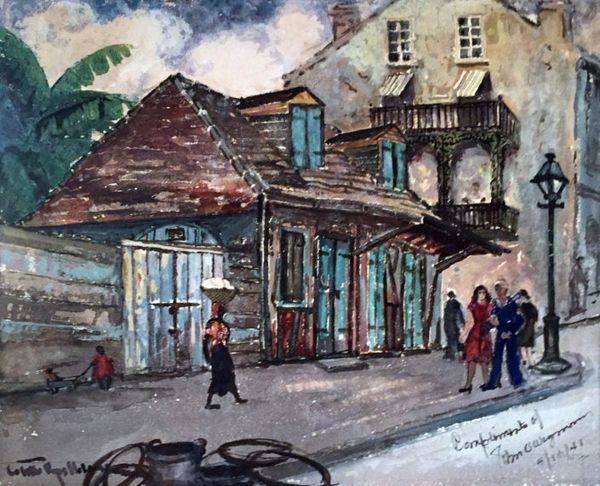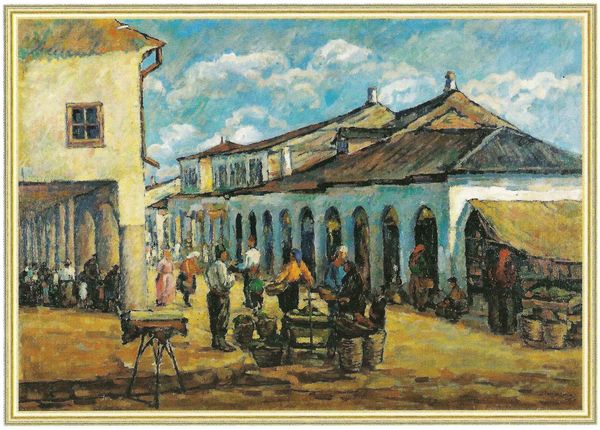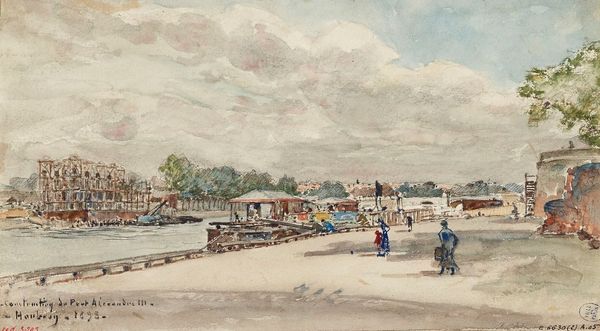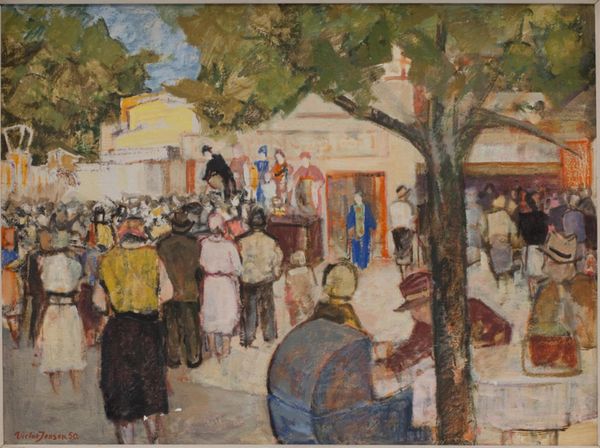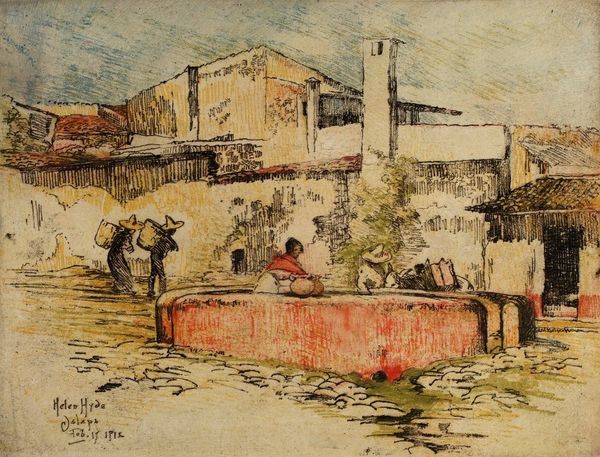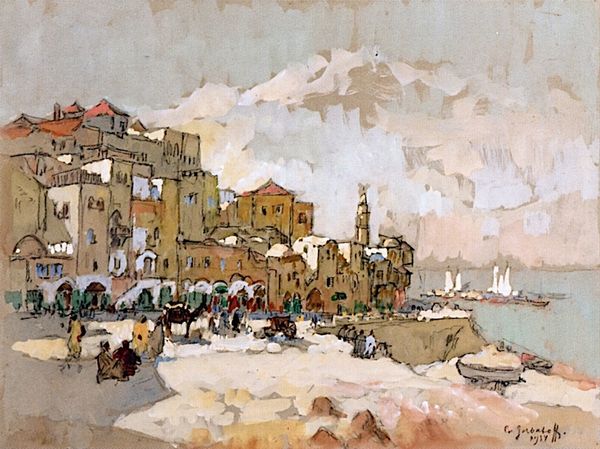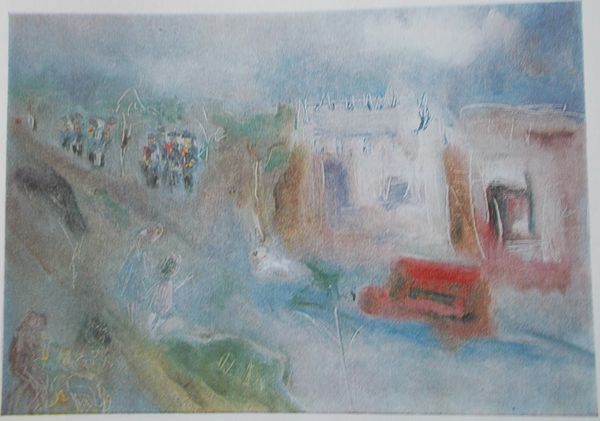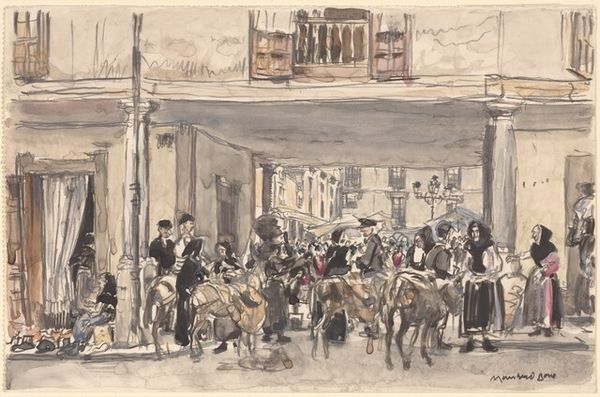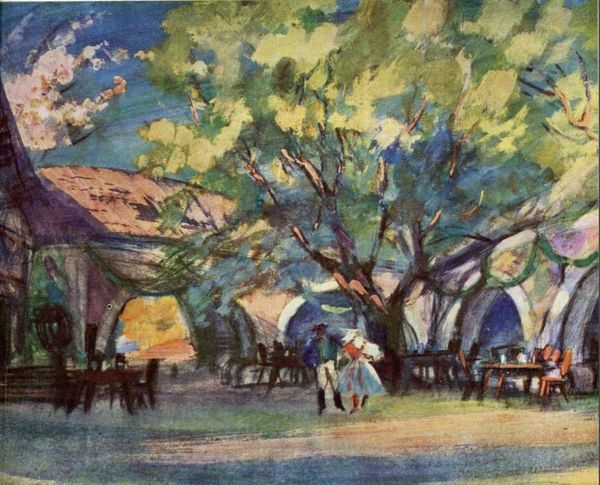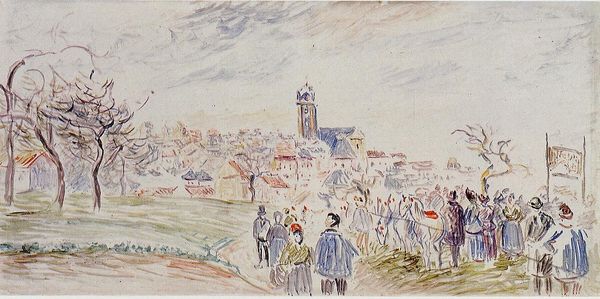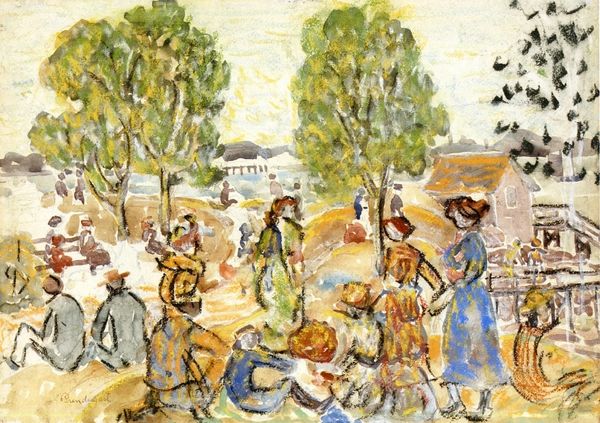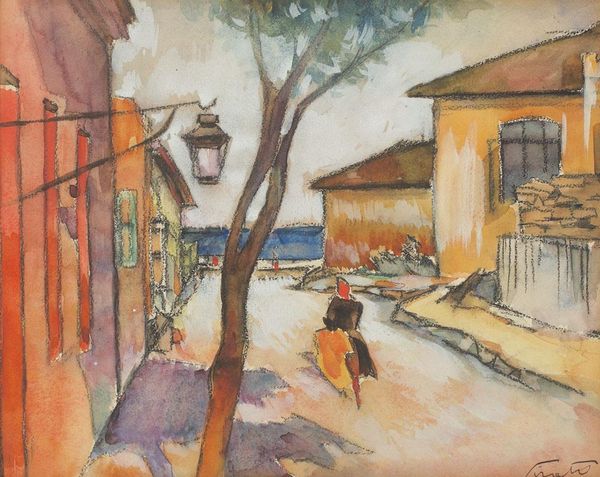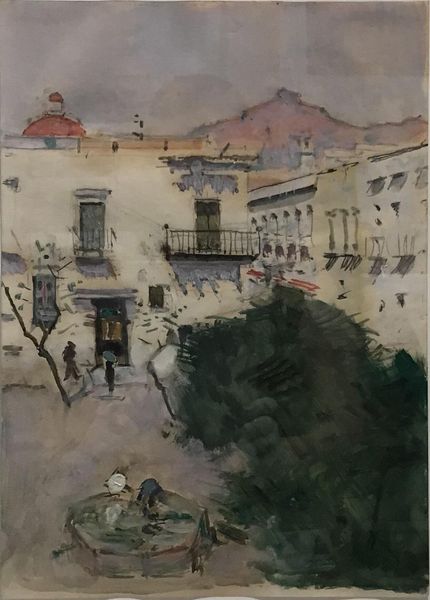
painting, plein-air, watercolor
#
painting
#
impressionism
#
plein-air
#
landscape
#
oil painting
#
watercolor
#
cityscape
#
watercolor
Copyright: Public domain
Curator: Let's take a closer look at Vincent van Gogh's "Gate in the Paris Ramparts" from 1887, currently residing in the Van Gogh Museum in Amsterdam. Editor: It’s… intriguing. A bit drab, isn't it? Sort of washed out. You'd never guess it was Van Gogh, with his reputation for vibrant colors. It seems rather muted, almost like a faded memory. I do notice what appears to be watercolor marks; the application looks quickly rendered, with definitive sketch marks present from initial planning. Curator: It's true, it's not as explosively colorful as his later work. Van Gogh was exploring Impressionism at this point, deeply influenced by the Parisian art scene. The subject matter is interesting in itself, depicting the city's fortifications and hinting at urban development and societal changes. It’s a portrayal of the everyday—workers going in and out of the city limits, a horse-drawn carriage, the practical materials of modern transit. Editor: Exactly! And note how the elevated vantage point—you're looking *down* into the scene—it feels deliberately constructed to show a sense of control, overseeing this labor hub. I mean, that beige color of the wall compared to the buildings? You know he chose to render that foreground deliberately. There is tension and division throughout the work. Curator: Precisely. One of the many reasons the painting has so much staying power! And, speaking historically, city ramparts themselves are symbols of power, control, defense—things the Impressionists loved to scrutinize and challenge. Consider how he lived in the midst of social changes—it reflects those times. Editor: And speaking of the here-and-now: observe how watercolor captures the atmosphere of transition with precision. The buildings aren't just sitting pretty but becoming a canvas for social processes—each brush stroke adds meaning to urban advancement while carefully considering how that might disrupt things for some members of society. The composition forces one to question progress, especially through a close observation of art supplies such as the quality of paper. Curator: I agree completely. Van Gogh skillfully weaves the historical moment together with everyday experience. The ramparts aren’t just a barrier but a site of exchange, a nexus where labor, capital, and social life intersect, as depicted by those exiting and entering into the city. Editor: Looking closer makes it clearer; materials speak loudly even if sometimes we listen better than we look... Curator: An exceptional example, in effect! We appreciate your visit and reflections on "Gate in the Paris Ramparts". Editor: Thank you! Appreciating material and historical viewpoints is key for any piece, in any case.
Comments
No comments
Be the first to comment and join the conversation on the ultimate creative platform.
